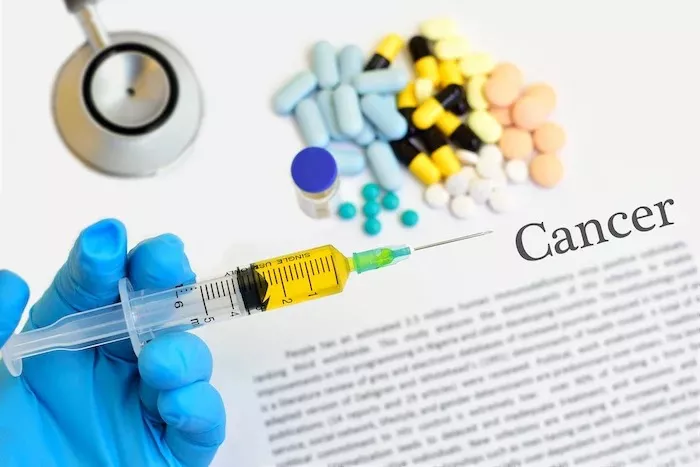Hypertrophic scars, an often underestimated aspect of wound healing, can pose both physical and psychological challenges for those affected. These raised, red, and sometimes itchy scars are a result of an overproduction of collagen during the healing process. Understanding how long hypertrophic scars take to heal is crucial for individuals dealing with them, as it can provide valuable insights into managing and mitigating their impact. In this comprehensive article, we delve deep into the world of hypertrophic scars, exploring the factors that influence their healing duration, the various treatment options available, and practical tips for scar management.
The Anatomy of Hypertrophic Scars
Before delving into the timeline of hypertrophic scar healing, it’s essential to understand their structure and how they differ from normal scars. Hypertrophic scars are characterized by an excessive buildup of collagen, a protein responsible for wound healing. Unlike typical scars, which tend to fade over time, hypertrophic scars remain raised and discolored. Their distinctive appearance can lead to self-esteem issues and emotional distress in affected individuals.
These scars typically form following injuries, surgeries, or burns that penetrate the deeper layers of the skin. When the skin is damaged, the body’s natural response is to repair it by producing collagen. In the case of hypertrophic scars, an abnormal amount of collagen is produced, leading to their raised and thickened appearance.
Factors Influencing Hypertrophic Scar Healing Time
The duration it takes for hypertrophic scars to heal can vary significantly from person to person. Several factors play a crucial role in determining how long it will take for these scars to fade and become less noticeable.
Severity of the Injury: The extent of the initial injury or trauma plays a significant role in the healing time of hypertrophic scars. More substantial injuries tend to result in more pronounced scars, which may take longer to heal.
Location on the Body: The location of the scar on the body can impact healing time. Areas with more blood flow, like the face, tend to heal faster than scars on areas with less blood circulation, such as the extremities.
Skin Type: Individual skin characteristics, such as pigmentation and thickness, can affect how hypertrophic scars heal. People with darker skin tones may be more prone to developing hypertrophic scars.
Age: Age can be a factor, as younger individuals tend to heal more quickly and efficiently than older individuals.
Genetics: Genetic factors can also influence how prone someone is to developing hypertrophic scars. If there’s a family history of these scars, an individual may be more likely to develop them after an injury.
Wound Care: Proper wound care during the initial healing phase can significantly impact the final appearance of a scar. Keeping the wound clean and protected can help minimize scar formation.
Hypertrophic Scar Healing Timeline
Now that we’ve explored the factors that influence hypertrophic scar healing, let’s delve into the typical timeline of how these scars evolve and eventually fade.
1. Initial Inflammation (Weeks 0-2): After the injury or surgical procedure, the body responds by initiating the inflammatory phase of wound healing. During this period, hypertrophic scars are at their most prominent, often appearing raised, red, and swollen. This phase can last for up to two weeks, but it varies depending on the individual and the severity of the injury.
2. Proliferation Phase (Weeks 2-8): As the inflammation subsides, the body shifts into the proliferation phase. During this time, collagen production increases to repair the damaged tissue. In hypertrophic scars, this phase can last longer than in regular scars, leading to continued thickening and raised appearance.
3. Maturation Phase (Months 3-12+): The maturation phase is when hypertrophic scars gradually improve in appearance. Collagen production becomes more balanced, and the scars start to flatten and fade. This phase can extend beyond the first year, and the timeline varies widely among individuals.
4. Long-Term Healing (Years): Some hypertrophic scars may continue to improve for several years, gradually becoming less noticeable. However, it’s essential to note that not all hypertrophic scars completely disappear, and some may remain visible to varying degrees.
Understanding this healing timeline is crucial for managing expectations and implementing effective scar management strategies.
Treatment Options for Hypertrophic Scars
While hypertrophic scars may naturally improve over time, there are various treatment options available to expedite the healing process and reduce their visibility.
Silicone Gel Sheets: Silicone gel sheets are a widely used over-the-counter treatment for hypertrophic scars. They create a protective barrier over the scar, hydrate the skin, and help flatten and soften the scar tissue.
Pressure Garments: Compression garments or bandages can be effective in reducing the elevation of hypertrophic scars. They work by applying continuous pressure to the scar, which can help flatten it over time.
Corticosteroid Injections: Medical professionals may administer corticosteroid injections directly into hypertrophic scars. These injections can help reduce inflammation and soften the scar tissue.
Laser Therapy: Laser therapy is a non-invasive option that uses targeted laser energy to break down excess collagen in hypertrophic scars, helping to flatten and lighten them.
Surgical Excision: In severe cases, surgical excision may be considered to remove the hypertrophic scar tissue. This option is typically reserved for scars that do not respond to other treatments.
Radiation Therapy: Radiation therapy is sometimes used in conjunction with surgical excision to prevent the recurrence of hypertrophic scars.
Tips for Managing Hypertrophic Scars
In addition to medical treatments, there are several practical tips that individuals can follow to manage hypertrophic scars effectively:
Keep the Scar Clean: Proper wound hygiene during the initial healing phase can help minimize complications and reduce the risk of infection.
Sun Protection: Protecting the scar from excessive sun exposure is essential, as UV radiation can worsen the appearance of hypertrophic scars. Always use sunscreen or cover the scar when going outside.
Massage: Gentle scar massage can promote blood circulation and collagen remodeling, potentially improving scar texture and appearance.
Moisturize: Regularly apply moisturizers or scar creams to keep the scar tissue hydrated, which may help soften and flatten the scar.
Stay Hydrated and Eat a Balanced Diet: Adequate hydration and a diet rich in vitamins and nutrients can support overall skin health and healing.
The Emotional Impact of Hypertrophic Scars
Beyond the physical aspects of hypertrophic scars, it’s crucial to acknowledge the emotional toll they can take on individuals. The visible nature of these scars can lead to self-consciousness, anxiety, and depression in those affected. Seeking emotional support through counseling or support groups can be an essential part of the healing process.
Conclusion
Hypertrophic scars, with their raised and discolored appearance, can be a challenging aspect of the healing process after an injury or surgery. While their healing timeline varies from person to person, understanding the phases of healing and the factors that influence it can help individuals manage their expectations.
With the right combination of medical treatments, scar management strategies, and emotional support, those dealing with hypertrophic scars can find relief and satisfaction in the gradual improvement of their scars. Remember that the key to hypertrophic scar healing lies in patience, persistence, and a comprehensive approach to care.
[inline_related_posts title=”You Might Be Interested In” title_align=”left” style=”list” number=”6″ align=”none” ids=”2803,2814,2730″ by=”categories” orderby=”rand” order=”DESC” hide_thumb=”no” thumb_right=”no” views=”no” date=”yes” grid_columns=”2″ post_type=”” tax=””]

































